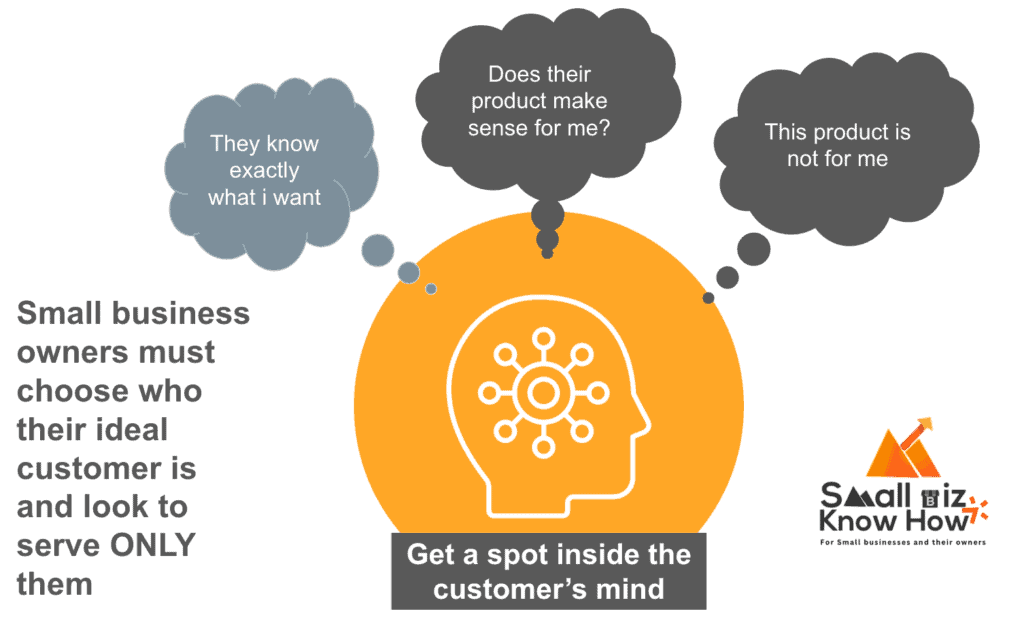While having a coffee conversation with a friend who runs a boutique business, our conversation delved in customer feedback, online reviews and what customers generally feel about working with her. The response I got was “my customers complain that I don’t customise enough”.
This got me curious and I dug deeper, since she runs a boutique business and fundamentally, its supposed to be a custom design. She explained that there are some techniques she figured out in the way she finishes the ‘darts’ in the dresses she makes that help improve the fit and the shape while dramatically improving wearing comfort.
She does not deviate from that process in her work which makes her products comfortable to wear on multiple occasions and helps clients wear them for a longer duration. Making any changes to that process would make the clothes uncomfortable. The proposition she was selling was ‘Sophistication’, ‘design’ and ‘comfort’ in a heavily ornamental gown.
She was not willing to compromise on the comfort by yielding to the customisation requests of her clients.
She had her ‘brand positioning’ completely figured out though she did not do it consciously for the positioning. She just knew what was good for her clients in the long run and prioritised that. What a brilliant marketing strategy!
That my friends is a very short lesson in brand positioning which is one of the key pillars of branding strategy, an essential part of marketing that small businesses should adopt.
What is a brand positioning strategy in marketing and branding?

Brand positioning is basically, the ‘mental spot’ your business occupies in the minds of your customer. It is very closely tied to customer preferences and how your business caters to those preferences. Each customer be it a consumer or another business have different tastes and preferences.
Knowing exactly what are the preferences that you cater to dictates the brand positioning strategy you take up for your business. There are many factors that determine how a small business should approach brand positioning in the market.
The most important factor is having the most detailed and granular answer to the two questions below. Getting answers to these creates clarity around who you serve and why.
- Who is my customer?
- Who is not my customer?
Brand positioning example from my business owner friend
The reason I raise both these questions as equally important is so that you can define exactly who your product serves in the best capacity possible. As a small business, it is not realistic to want to serve the whole world. You have to be decisive and choose a set of customers who are enough to sustain your business.
What should you answer to the question of ‘who is my customer’?
This can be best explained from my friend’s example where she runs a boutique store and makes ornamental dresses and gowns for women. She does not make wedding gowns.
In her own words, her target customer is
“A middle aged woman, typically over the age of 35 and under the age of 50. She is a married mother, often to more than one kid. She lives with her family in an upscale neighbourhood. She is well educated, with a college degree, mostly with an advanced degree and holds a position of responsibility in the corporate sector”.
As you can see from the the above description, she has picked a very narrow niche of discerning women as her clientele to serve. Her reason for this is simple, high achieving women have a lot of social commitments where they need to put their best foot forward. At the same time, they have responsibilities at home.
They typically don’t have the time to be choosy when it comes to designs, but they want something that is unique, elegant, impressive and comfortable at the same time since they need to wear it for a long time. They are not very picky and they are flexible on what they are willing to spend.
The position that she has built in her customer’s mind is that of ‘elegance’, ‘luxury’ and ‘comfort’ that addresses their basic need to look and feel great.
How does ‘who is not my customer?’ look like?
She has also articulated who her customer is not. Her customer is not someone who is younger than the age of 30, who is looking for designer and fashion wear that fits a specific ideal body shape or image. Her customer is not someone who needs to flaunt at cocktail circles or someone who is just getting married.
She has eliminated almost 90% of the market where designer gowns actually sell with her selection of customers.
Her clients are extremely niche, but she has an almost 100% retention rate. All her customers come back at least 2-3 times a year which makes her customer lifetime value to cost of customer acquisition extremely attractive.
Being extremely picky about who your clients and customers are, help you to serve them much better
From the above example, we can see that how a small business positions its brand is crucial to building a name for yourself in the market and to build brand recognition with customers where it really matters. Ultimately, keeping your company in the customer’s mind in the right context is the job of brand positioning.
As I understood my friend’s business model better and looked at other business owners who enjoy similar customer relationships, what became a bit clear is that once you as a business owner choose which customer you want to serve, those customers will also build a perception about your business favourably.
Should a small business worry about its brand positioning strategy?

Not knowing what your business stands for is a recipe to target everyone as your potential customer, waste precious resources and wonder 5 years from today why your business did not take of or succeed. In my article on DIY branding, i have written about what branding is and what branding is not.
Now, if you really want customers to know ‘Your’ business in a crowded and cluttered market, brand positioning is extremely critical for you.
As a small business owner, you must have a brand positioning strategy in place even if you don’t have aspirations to scale your company into a large corporation. Positioning your company for a select group of customers will give you the following benefits.
- You can move away from competing on price in a crowded market thanks to your brand
- You can very easily create customer segments and cohorts for your brand since they will be a limited set
- Its much simpler to identify customer tastes and preferences with a good brand positioning strategy
- Customers will be able to relate with your brand much better and will give them a strong reason to remain loyal
- All your activities on marketing, content, promotion will be extremely focussed that will help with consistency for your brand
More than the hard benefits listed above, your brand positioning strategy will give your business a sense of purpose which helps in pulling in the right talent to come and work for you.
How does brand positioning help create a successful brand for a company?

For a successful brand positioning, your ability to identify the exact kind of customer your want to serve is critical. In reference to my friends boutique business that was quoted earlier in the article, you should be able describe your ideal customer in as much detail as possible.
You should also decide who your customer is not, while looking at closely resembling personas but with key differences.
Doing this will give you some practical benefits to your business.
- It will help you size the market and give you an estimate of how many customers you can possible serve and if that can sustain your business
- The right customer profile will also tell you with some certainty where your customers are likely to live, shop, travel and engage in social interactions
- It will also give you an indication of their spending potential and what they can fork out for a single or frequent transaction
The same is true when you are trying to figure out other businesses that can be your customers in a B2B setting.
Brand positioning is only successful when you identify your target customer as granularly as possible
When you have finalised on who your customer is at the most granular level possible, there are many ways in which it will help your business build a better brand as well as drive better results for business.
Brand positioning helps in targeted product development
Knowing which customers to serve will help your business prioritise the features that are critical to solve their most pressing pain points to the best possible degree. Prioritising what to build becomes that much more straight forward.
Positioning strategy can also influence partnership strategy
Your brand positioning and the kind of customers you serve will heavily influence the kind of partners you want in your business. If you are looking to serve young college educated, couples working in high-paced jobs and living primarily in down-town condos, your selection of partners for distribution, service will be very different when compared to a serving a wealthy family living in the suburbs.
Brand Positioning will streamline marketing communication
Brand positioning provides much needed clarity on the target customer, which makes it easy to produce marketing communication that resonates with the audience in a very consistent voice and tone. The problem occurs when content creators are trying to figure out who their primary audience is.
This also has an influence on brand story telling which is an integral part of any marketing strategy.
The right brand positioning aligns customer expectations with customer experience design
If your brand positioning strategy is good, then you will be able to exactly gauge what the customer expects and deliver that experience. There is nothing better than giving people what they want in order to win them for life.
You will also be able to predict customer behaviours and elevate their experience because you will know what they expect from your brand. Doing this consistently will help build your brand as one that delivers on its promises and creates a ‘halo’ effect.
Brand Positioning strategy also influences distribution strategy
Depending on the customers you want to serve, you will also end up choosing distribution channels where you customers prefer buying from. You may want to create experience centres that are completely managed by you if you have a boutique studio like what I mentioned in the beginning.
What are the different ways in which small businesses can implement a brand positioning strategy?

The classic textbook of marketing says that a business can approach brand positioning in about 5 ways. marketing specialists or academicians call these as 5 brand positioning strategies. In short these are
- Customer service based brand positioning strategy
- Price based brand positioning strategy
- Brand positioning strategy based on convenience
- Brand positioning based on differentiation
- Quality as the parameter that defines the brand positioning strategy
For the sake of simplicity, i have clubbed both customer service and price into a ‘Value’ based brand positioning strategy.
Value based brand positioning strategy – Highlight what your target market values
Positioning your brand based on the value that your business offers to the customers is often the best way to get the coveted ‘seat’ in your customer’s mind for what your brand stands for. Businesses can choose to establish this value either in terms of exceptional customer service or through providing great quality at fantastic prices,
Customer service based strategy for positioning your brand and product
Choosing customer service as a way to position your brand is often very challenging for a small business with limited resources. However, what can help the small business owner overcome these challenges are some of the following practical applications of exceptional customer service.
- Being real and personal – As a culture if you treat every customer interaction as a human experience rather than an impersonal brand spiel, over time, customers will love you for the honesty and personal approach. Even if you are unable to resolve customer issues, being real about it and promising a better experience the next time will solve it.
- Creating a ‘Remarkable’ experience – in Seth Godin’s words, being ‘remarkable’ means that its work remarking about. Treat customers in a way that will make them tell others and build a good ‘word of mouth’ equity.
- Respond promptly and sincerely to feedback – Being open to critique can really help a business grow, being welcoming of critical feedback as a part of the customer service experience. Responding sincerely and making a genuine attempt to rectify any shortcoming will often go a long way in establishing your brand. Customers are always willing to give you a second chance if they feel that you have made a sincere attempt to correct errors.
- Being consistent in your messaging and team’s behaviour – Training your teams to behave in a consistent manner with your customers, even if your customers are ‘super pissed’ is a great way to establish a good reputation for your brand. Not just with the impacted customer, but even those who are on-lookers.
Pricing based positioning to select the customers you want to serve
A pricing based brand positioning strategy is something that i would strongly advise small business owners against, unless you have something that is uniquely available to you which puts you in a position of strength.
The company that has successfully grown profitably with a pricing based brand positioning strategy is Costco. But they have the best efficiency metrics in the industry with the highest inventory turns which helps them keep their working capital cycles extremely short. They also are extremely choosy about their SKUs they stock and have advanced analytics and prediction models that help them optimise inventory to match expected sales. All of these work together to help reduce inventory from ‘blocking’ cash which helps them position themselves as the price leader.
As a small business owner, if you want to follow the pricing based brand positioning strategy, there are some pitfalls you should avoid.
- Avoid racing to the bottom with unrealistic pricing or by pricing your products too low to win ‘temporary’ customers
- Don’t keep fluctuating your prices, keep the prices consistent
- Always make sure that your business model can sustain low prices for a long duration without hampering your cash flows
- While pricing a few products low, don’t overprice other products unreasonably to make up for lost revenue, customers can see through this tactic and it will make them lose trust in your brand
Brand positioning based on convenience – Using in-depth market research

The primary objective for small businesses who want to use this brand positioning strategy is to remove all barriers that customers face during their purchase journey. This helps in establishing a strong brand identity and position in the market they want to address.
All practical advise for small businesses are around removing barriers, simplifying processes, automating processes and making your customer’s life easy in general. Some of the practical tips that small business owners in this brand positioning strartegy are
- Deep dive and stay acutely aware of customer’s pain points
- Simplify every touch point that your customer has with you, remove all barriers to transact
- Be present across all distribution channels that your customer uses
- Make sure your team is trained to respond immediately and sincerely to any customer query
- Keep as many options available for your customer
- Use technology to be accessible whenever your customer wants to reach out to you
As you adopt these, you should make sure that the economics of your business model supports all the investment you put into providing convenience. In my experience, I have seen that small businesses that succeed in a convenience based brand positioning strategy have extremely wealthy clients but have very few clients, some of them have less than 50 clients whom they serve.
This makes its a very personal experience for the clients, but it becomes challenging to scale beyond a certain number of customers that you may be able to serve effectively.
Brand differentiation strategy – Establish a unique brand identity

A brand differentiation strategy allows a company to differentiate itself from competitors. As simple as it sounds, it is one of the most mis-understood brand positioning strategies. A common example that many ‘gurus’ give is that of Tesla and how they positioned themselves differently in the market to compete against regular automakers to target an audience that had evolved tastes.
This is really great in the rearview mirror.
But, how do you really differentiate your small business in a sea of corporations and other businesses who are after the same customers?
Based on my interactions with many business owners over the past several years, successful businesses that have grown with the differentiation strategy have a few elements that are common. These elements are essential but not sufficient for you to succeed.
There are several other factors such as the degree of competitive intensity that your brand might face which can either accelerate or delay your success.
Some of the essential elements of a successful differentiation strategy boil down to the decisions that you need to make as a business owner and your willingness to stick to your convictions.
Identify your brand’s unique value proposition
As easy as it sounds, establishing your brand’s unique value proposition can be translated to a single question – What is the stance that you are willing to take that your competition is not willing to take?
Lets look at an example, if you own a cafe can you take a stance that you will only offer ‘vegan’ options in every dish that you have? or can you say that you will never offer ‘vegan’ options and only use full-fat cow milk in all your lattes?
In this example, you are positioning your brand to exclude a potential audience, you are effectively telling them – ‘go somewhere else’, your product is not meant for them. This is what ‘taking a stance’ means.
Many business owners are unwilling to take this stance. Because they don’t want to turn away a potential customer. But then what you become is an ‘average’ cafe that satisfies ‘everyone’s’ taste and you no longer have any ‘difference’ when compared to other cafe’s. You don’t get a differentiation brand positioning.
Build a community around your brand’s differentiated offering
Once you take a stance in your niche, you will have people who agree with you and people who disagree with you purely from an emotional connect perspective. Use this divergent and polarising stage to create an audience you become your fans and become your community.
Take the example of Kiyoko Beauty, the Canadian firm that wants to take ‘asian’ beauty to everyone. They took a stance about leading with asian beauty practices for the western woman and have succeeded in creating a vibrant community for those who believe in their stance.
People who don’t believe in Kiyoko’s approach wont go to them and will move to brands that they resonate with.
But those who agree with Kiyoko’s philosophy to beauty will be staunch supporters and patrons which is ‘good enough’ for the business to be hugely successful.
Take a stance. Build a community of those in support of your stance.
Educate your customers as much as you can
The third essential element of your differentiation brand positioning strategy has to be education. You have taken a stance, you have built a community. The next step id to reinforcing your stance and your brand’s beliefs repeatedly to your target customer through educational initiatives.
This can be through story telling, through content and through channels such as social media and video. The messaging needs to be consistent and frequent so that people who are convinced with your stance, get more passionate about it.
This will also pull in those on the fence about your stance into your fold and help increase the number of customers who fall into your target group.
I also believe that education is the best manner in which you can promote your business because you will become an authority once you start teaching. People trust authority.
Brand Positioning based on Quality – Your product quality is alone enough to sell

When we speak about quality, one brand that immediately comes to mind is Le Creuset, the french kitchenware brand that was founded in 1925. Even to this day, each piece of cookware is still made in the same factory near Paris where they originally started.
It took two industrialists to master quality enamelling of cast iron cookware to make them colourful. Many brands have tried to replicate their process but they still fall short on a few counts and purists who prefer Le Creuset will not swap for anything else even if its less than half the price.
‘Quality’ is a powerful signal a brand can send out to take the strategy for brand positioning. This is relatively an easier approach to brand positioning for a small business since you as a business owner, are a master of your craft and its easier for you to make the highest quality product in your niche.
There are a few elements of a Quality driven brand positioning strategy that small business owners need to be mindful of to get the best success.
Build a culture of quality in your business so that your brand resonates with quality
Everyone in your business, right from the receptionist to your customer success representative must believe in the quality of your product and that should reflect in the day to day conversations. Once done long enough and consistently enough, it will build a culture of ‘quality consciousness’ in your business.
This culture will sustain the long term positioning of your brand as the quality leader in your niche.
Try and associate your brand with a legacy, history or a great story
What really works in positioning your brand as a leader in quality is the association of your brand with a history or legacy of producing great products. Most famous brands have more than 50 years of legacy to go back on.
If you are a new business or have started recently, try and bring in an association with a process that has a rich history that you use, or try and associate your brand with a technical advantage such as a patent or any technical award or recognition that you may have recieved.
If you have none of those, try and apply for an award in the specific niche that recognises the work that you have put into your product.
Build thought leadership and educate your customers
Building thought leadership in quality also positions you as an authority about the best practices in your industry. Supporting your opinions with educational materials also creates psychological feeling of technical expertise in your customer’s minds.
Technical expertise is often always associated with quality and reliability. You could also support your technical expertise with confidence building measures about your product with guarantees on product performance.
A claim that is backed by technical expertise in a field is often trusted by customers to be of high quality.
Quality of a brand is judged by the packaging that you use

Appearance, touch, feel goes a long way in establishing the perception of quality before experiencing the actual quality of the product. Invest in creating well designed and premium packaging for your products if they are physical goods.
All of use appreciate the quality and minimalist design used by apple for packaging their products. Another example is of that of La Fiole du Pape, the wine that comes in a twisted asymmetric shaped bottle that looks deliberately dirty to make it look like fine aged wine.
